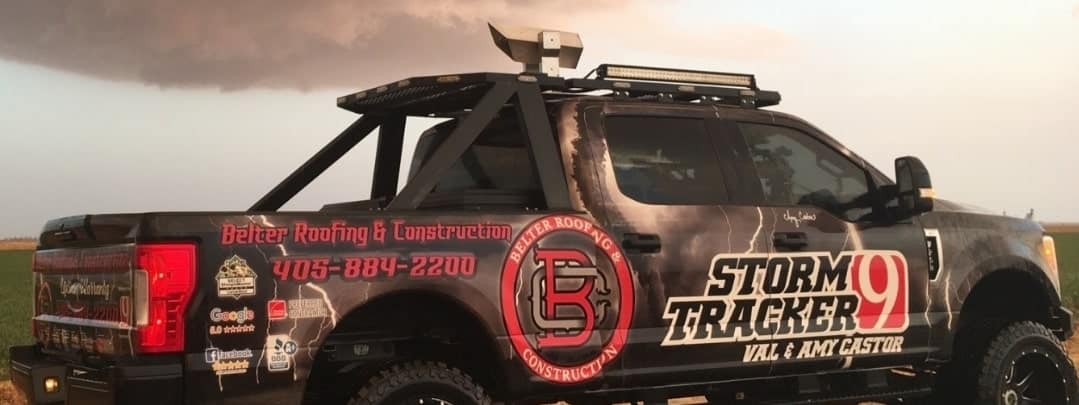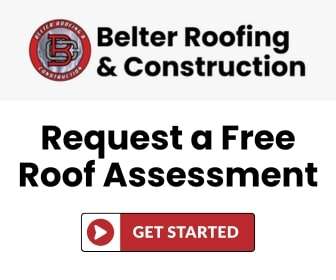Oklahoma is no stranger to severe weather conditions. Every year, the state experiences numerous storms that can cause significant roof damage to homes and properties.
From hail and high winds to heavy rain and tornadoes, these storms can wreak havoc on roofs, leaving them vulnerable to leaks, water damage, and structural issues leaving home and business owners needing emergency roof repair.
We’ll delve into the topic of Oklahoma storm damage roof repair and highlight its importance in protecting your home. We’ll cover the various types of storm damage that roofs can experience, the signs to look out for, and why prompt repair is essential.
We’ll also discuss the repair techniques used to fix storm-damaged roofs, factors to consider when choosing a roof repair professional, and how our company can help you with Oklahoma storm damage roof repair needs.
By the end, you’ll better understand storm damage roof repair and how to safeguard your roof and home against future storms.
Types of Oklahoma Storm Damage
Oklahoma storms can cause various types of damage to your property, including your roof. Understanding the types of storm damage that your roof can experience can help you identify issues and take action to prevent further damage.
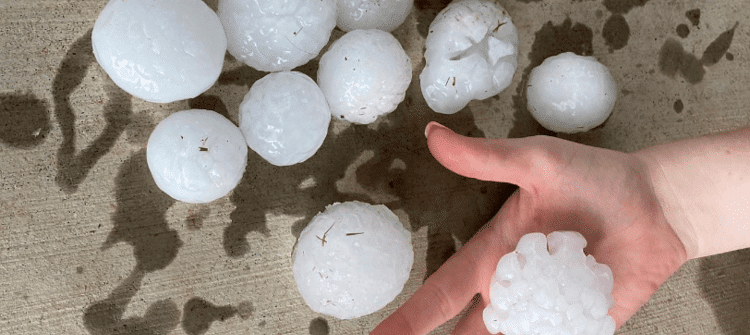
Oklahoma Storm Damage Your Roof May Indur
When a storm hits, the first thing that comes to mind is the safety of those in its path. But once the storm passes, inspecting your property, particularly your roof, for any signs of damage is essential. Understanding the different types of storm damage that roofs can experience is crucial in promptly identifying and addressing any issues.
- Hail Damage: Oklahoma experiences severe hailstorms, which can cause significant damage to roofs. Hailstones can dent or crack shingles, dislodge granules, and cause holes in the roof. Large hailstones can even penetrate the roof and cause water damage.
- Wind Damage: High winds are another common cause of storm damage to roofs in Oklahoma. Strong winds can lift and remove shingles, damage the roof’s edge, and loosen flashing, leaving the roof vulnerable to water damage.
- Rain Damage: Heavy rain can cause water to seep through roof gaps or holes caused by hail or wind damage. Water damage can weaken the roof’s structure, leading to mold, mildew, and other issues.
- Tornado Damage: Oklahoma is situated in the infamous “Tornado Alley,” and tornadoes are common in the state. Tornadoes can cause severe damage to roofs, including destruction or tearing off of the roof.
- Debris Damage: During a storm, debris, such as tree branches and flying objects, can impact and damage the roof, causing punctures or holes that can lead to leaks.
It’s essential to understand the types of storm damage that roofs can experience to identify any damage that may have occurred and address it promptly to prevent further issues.
The Impact of Storm Damage on Your Roof’s Structure and Durability
When a storm hits, the roof of your property is often the first line of defense against its damaging effects. However, roofs are susceptible to different types of storm damage, each with its own potential effects on the structure and durability of your roof.
Understanding these effects can help you determine the severity of the damage and take appropriate action to address it.
- Hail Damage: Hail damage can cause significant damage to the shingles, dislodging granules and making them vulnerable to water damage. Hailstones can also cause holes in the roof, allowing water to seep through and weaken the roof’s structure. If left unrepaired, hail damage can result in more extensive and costly repairs.
- Wind Damage: High winds can lift and remove shingles, exposing the roof to water damage. Wind damage can also loosen flashing, causing water to seep through the gaps and damage the roof’s underlayment. Wind damage can weaken the roof’s structure, leading to potential collapse or additional damage during future storms.
- Rain Damage: Heavy rain can cause water to seep through gaps in the roof and cause water damage to the roof’s underlayment and structure. Water damage can lead to mold and mildew growth, weakening the roof’s design and durability.
- Tornado Damage: Tornadoes can cause severe damage to roofs, from lifting and removing shingles to destroying the roof. Tornado damage can also result in water damage and weakened roof structure, leading to potential collapse or additional damage during future storms.
- Debris Damage: Debris damage can cause punctures or holes in the roof, leading to leaks and water damage. If left unrepaired, debris damage can weaken the roof’s structure, leading to more extensive repairs or a replacement.
It’s crucial to address any storm damage promptly to prevent further damage and ensure the roof’s durability and protection for your home.
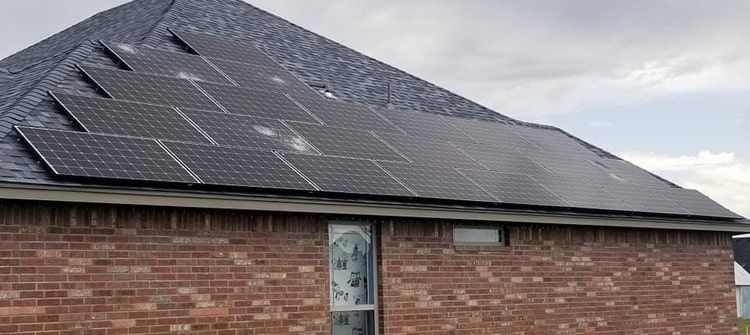
Recognize signs of Storm Damage on Roofs
Even if your roof looks intact after a storm, it may have sustained damage that can cause problems later. Inspecting your roof for any signs of wear is essential, as prompt identification and repair can prevent further issues.
How to Identify Issues with Your Roof
After a storm, there are several telltale signs that your roof may have sustained damage. Being able to identify these signs can help you take prompt action to address any issues and prevent further damage.
- Missing or Damaged Shingles: High winds and hail can cause shingles to lift, crack, or break, exposing the roof to water damage. Missing shingles can also be an indication of significant damage.
- Granules in Gutters: Shingles contain granules that help protect the roof from the sun’s UV rays and weather damage. Finding granules in your gutters or ground after a storm may indicate that your shingles are deteriorating and need repair or replacement.
- Dents or Holes: Hailstones can cause dents or holes in the roof, leading to water leaks and potential structural damage. Tornadoes and debris can also cause punctures or holes in the roof.
- Water Stains on the Ceiling or Walls: Water stains on the ceiling or walls inside your home may indicate that water is leaking through your roof. Water damage can lead to mold and mildew growth, weakening the roof’s structure.
- Roof Leaks: Leaks can be a sign of significant roof damage and must be addressed promptly to prevent further water damage and structural issues.
- Bent or Damaged Flashing: Flashing is a thin metal strip that covers the seams and joints of the roof, preventing water from seeping through. High winds can loosen or damage flashing, leading to water damage and leaks.
Inspecting your roof for any signs of damage after a storm is essential to address any issues promptly and can keep you from paying the cost of a new roof.
Address Storm Damage Issues Quickly
Promptly identifying and addressing signs of storm damage on your roof is crucial to preventing further damage and costly repairs.
Ignoring or delaying roof repairs can lead to more extensive damage and potentially compromise the structural integrity of your roof, putting your home and safety at risk.
For instance, a small roof leak may seem like a minor inconvenience, but over time, it can cause significant water damage to your home’s interior, including ceilings, walls, and flooring.
The moisture can also lead to mold and mildew growth, posing a health hazard to you and your family. The damage can become severe if left unaddressed, requiring expensive repairs or a complete roof replacement.
Additionally, minor damage to your roof, such as missing or cracked shingles, can quickly escalate during the next storm. The damaged shingles can weaken the roof’s structure, making it more vulnerable to wind, rain, or hail damage. Addressing these issues promptly can prevent further damage and extend your roof’s lifespan.
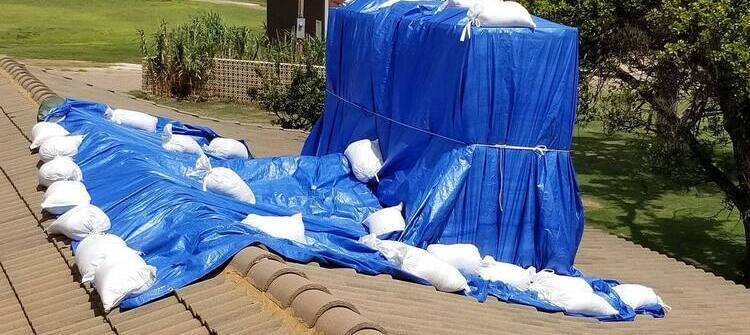
Repair Techniques for Storm Damage Roofs
When it comes to repairing storm-damaged roofs, various techniques are used depending on the extent of the damage. Here are some standard methods used by roofing professionals:
- Shingle Replacement: Shingle replacement may be the most cost-effective solution if your roof has only suffered minor damage, such as a few missing or cracked shingles. Roofing professionals can replace damaged shingles with new ones to restore the roof’s integrity.
- Patching: For small punctures or holes in the roof, patching is a common technique used to repair the damage. The roofing professional will clean the area and apply a patch made of similar materials to the damaged area, sealing the hole and preventing further damage.
- Partial Roof Replacement: If the damage is more extensive but still localized to one area of the roof, a partial roof replacement may be necessary. This technique involves removing and replacing the damaged section with new shingles or roofing materials that match the existing roof.
- Complete Roof Replacement: A total roof replacement may be necessary if severe damage is widespread. This involves removing the entire roof and replacing it with new materials. Although more expensive than other repair techniques, a total roof replacement can be a wise investment in the long run, as it provides a fresh start for your roof and can extend its lifespan.
It’s essential to consult with a professional roofer to determine the best repair technique for your roof based on the extent of the damage and the type of roof you have. Proper repairs can help maintain the integrity of your roof and prevent future damage, keeping your home safe and secure.
Pros and Cons of Each Roof Repair Technique
Let’s take a look and discuss the pros and cons of each technique used to repair storm-damaged roofs, including shingle replacement, patching, and complete replacement. Additionally, we will explain the appropriate circumstances for to use of each method.
By understanding the advantages and disadvantages of each approach, you can make an informed decision about which technique is best suited for your roof.
shingle replacement
Pros:
- Most cost-effective solution for minor damage.
- Does not require the entire roof to be replaced.
- Can restore the roof’s integrity and extend its lifespan.
Cons:
- May not be appropriate for more severe damage.
- The new shingles may not match the existing ones exactly.
When appropriate: Shingle replacement is suitable when the damage is localized to a small roof area, and only a few shingles need to be replaced. This technique is most effective when the damage is minor and does not require a total roof replacement.
Patching:
Pros:
- Cost-effective solution for small punctures or holes.
- Can prevent further damage to the roof.
- It can extend the roof’s lifespan if done correctly.
Cons:
- May not be appropriate for more severe damage.
- It may not be a permanent solution, as the patch may degrade over time.
When appropriate: Patching is proper when a small puncture or hole in the roof can be repaired easily. This technique is most effective when minor damage is localized to a small roof area.
Partial Roof Replacement:
Pros:
- It can be less expensive than a total roof replacement.
- It can restore the roof’s integrity in a localized area.
- Can extend the lifespan of the roof if done correctly.
Cons:
- The new section may not match the existing roof exactly.
- May not be appropriate for extensive damage.
When it’s appropriate: Partial roof replacement is suitable when the damage is localized to a specific area of the roof and the rest of the roof is still in good condition. This technique is most effective when the damage is more extensive than what shingle replacement or patching can fix but not severe enough to require a complete roof replacement.
Full Roof Replacement:
Pros:
- Provides a fresh start for the roof.
- Can extend the roof’s lifespan significantly.
- Can increase the home’s resale value.
Cons:
- Most expensive solution.
- It may require a significant investment of time and resources.
When it’s appropriate: Full roof replacement is suitable when the damage is extensive and widespread, or the roof is nearing the end of its lifespan. This technique is most effective when the damage is too severe for shingle replacement, patching, or partial roof replacement to be effective.
Each technique for repairing storm-damaged roofs has pros and cons, and the appropriate method depends on the extent of the damage and the roof’s condition. Consult a professional roofer to determine the best solution for your situation.

Choose an Oklahoma Roof Professional
When selecting a roof repair professional in Oklahoma, it’s essential to consider the following factors:
- Experience and Qualifications: Choosing a roofing professional with the necessary knowledge and qualifications to handle the type of storm damage your roof has sustained is essential. Look for a roofer who has been in business for a while, has a good reputation, and is licensed and insured.
- Reputation and Reviews: Research and read reviews from previous customers to get an idea of the roofing professional’s reputation. Look for a roofer with a history of providing proof of recent roofing projects, high-quality work, and excellent customer service.
- Pricing: When selecting a roofing professional, get several quotes from different contractors. Be wary of contractors who offer pricing that seems too good to be true, as they may be using substandard materials or cutting corners.
- Availability: Many homeowners will need roof repairs after a storm, and roofing professionals may be in high demand. Ensure the roofer you select is available to complete the repairs promptly to prevent further damage.
- Guarantees and Warranties: Ask about the guarantees and warranties the professional roofing offers. A reputable contractor should stand behind their work and offer warranties for their services and contracts for the materials used.
- Safety Precautions: Roof repair work can be dangerous, and choosing a roofing professional who takes safety seriously is essential. Look for a contractor who follows safety guidelines and protocols to ensure the safety of their workers and your property.
By considering these factors when selecting a roof repair professional in Oklahoma, you can ensure that your roof is repaired by a qualified and reputable contractor who will provide high-quality work and excellent customer service.
Our Oklahoma Storm Damage Roof Repair Services
At Belter Roofing and Construction, we specialize in providing reliable and efficient storm damage roof repair services in Oklahoma. Our team of experienced professionals is equipped with the knowledge, skills, and tools to handle any storm damage to your roof.
Our Company and Services
As a reputable roofing company, we take pride in offering a wide range of services to meet your storm damage repair needs. Whether you need shingle replacement, patching, or a complete replacement, we have you covered. Our services include:
- Comprehensive roof inspections to assess the extent of damage
- Vast knowledge and experience with Oklahoma roof insurance claims
- Emergency tarping and temporary repairs to prevent further damage
- Roof repair services tailored to your specific needs
- Professional and efficient service from start to finish
Our Process and Techniques
When you choose our services for your storm damage roof repair needs, you can rest assured that we follow a detailed and comprehensive process to ensure the best results. Our process includes the following:
- Inspection: We provide a no-obligation roof inspection to examine your roof and assess the damage’s extent thoroughly.
- Planning: We develop a detailed plan of action based on the extent and nature of the damage.
- Repair: We use advanced techniques and high-quality materials to repair your roof efficiently and effectively.
- Follow-up: We follow up with you to ensure that you are satisfied with the repairs and answer any questions you may have.
Benefits of Choosing Belter Roofing
You should choose our company for your Oklahoma storm damage roof repair needs for many reasons. Some of the benefits of choosing us include the following:
- Experienced professionals who understand the unique challenges of storm damage repair
- Quality workmanship and attention to detail
- Competitive pricing and transparent service
- Fast and efficient service to minimize disruption to your daily life
- Guaranteed customer satisfaction
With our services, you can know that your storm-damaged roof is in good hands. We recognize that dealing with roofing contractors may be difficult and complex. We would be honored to be considered when you are looking for the best Oklahoma roofing contractor for your home or company.
We’d love to hear more about your project and provide you with a free Oklahoma roof inspection.
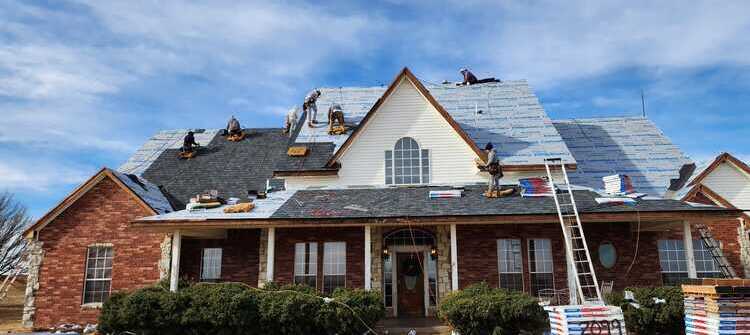
In Conclusion
Promptly addressing storm damage on your roof is crucial to prevent further damage and ensure the safety and longevity of your home. Failure to address storm damage can lead to more costly and extensive repairs in the future.
When selecting a roof repair professional in Oklahoma, remember to hire a licensed and insured professional with a solid reputation.
If you need Oklahoma storm damage roof repair services, please consider Betler Roofing and Construction.
We have the expertise and experience to assess and repair storm-damaged roofs using the latest techniques and equipment.
Our team of licensed and insured professionals is committed to providing high-quality and reliable services to ensure the safety and protection of your home. Contact us today to schedule a consultation.
Let's Have a Conversation
Table of Contents
- Introduction
- Types of storm damage
- Roof damage you may incur
- The impact of storm damage
- Storm damage signs
- How to identify roof damage
- Address roof damage quickly
- Roof repair techniques
- Pros and cons of roof repair
- Choose a professional roofer
- Storm damage roof services
- In conclusion
Share this Article

